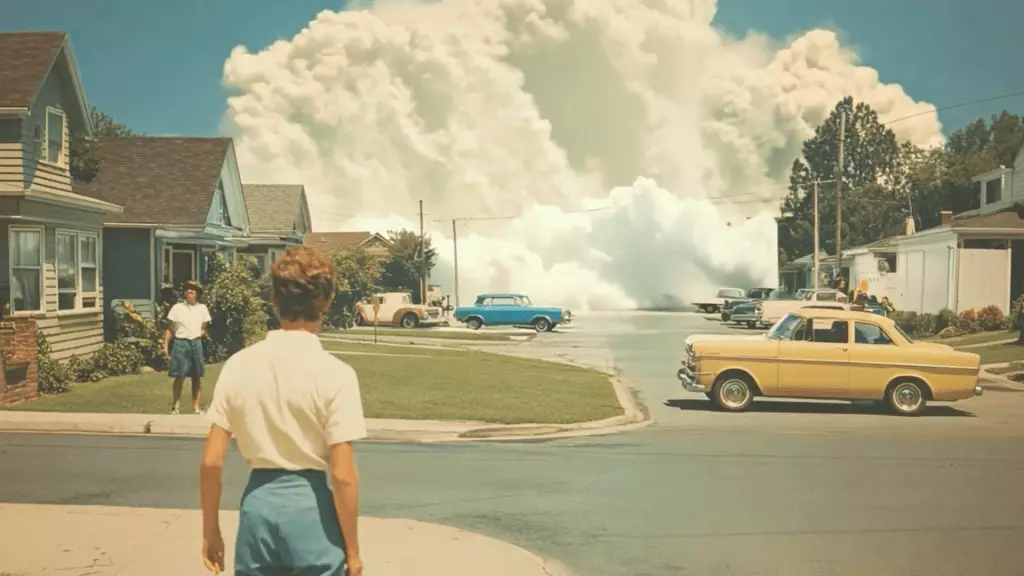In the pulsating heart of New York’s Lincoln Center, a groundbreaking moment unfolded with the screening of Jacob Adler’s mesmerizing film, *Total Pixel Space*. This essayistic work, fueled by the innovative currents of artificial intelligence, triumphed at the third annual AI Film Festival, a gathering that has quickly transformed from a whimsical idea into a formidable platform for creative expression. With AI technology at its helm, the festival not only showcased artistry but ignited important conversations about the very fabric of the film industry.
The rapid evolution of AI in artistic production, particularly in film, is gaining traction, and *Total Pixel Space* serves as a compelling reflection of that journey. As CEO Cristóbal Valenzuela of Runway, the festival’s main backer, articulated, this innovation is not merely a trend; it represents a seismic shift in how stories can be told. With an explosion of submissions—from a mere 300 last year to an astonishing 6,000—AI has successfully lowered the barriers to entry in filmmaking, allowing a diverse range of creators to share their visions.
New Avenues for Creative Expression
The implications are clear: the influx of AI tools liberates filmmakers, enabling them to explore uncharted narratives without the constraints that traditional filmmaking typically imposes. Steven Ellison, better known as music producer Flying Lotus, emphasized this point in his remarks at the festival. He dismissed the notion of rigid boundaries in artistic creation, advocating for a creative process defined by spontaneity and exploration. This “f*ck around and find out” approach highlights a crucial aspect of AI’s role in film: it encourages playfulness, an essential ingredient for originality.
As more creators engage with AI, they are discovering that the medium can yield unexpected results—whimsical characters, bizarre settings, and dreamlike imagery that may not have otherwise emerged with traditional methodologies. This approach leads to a unique artistic expression where the line between creator and creation blurs, inviting a deeper exploration of subconscious ideas and themes.
The Festival’s Diverse Palette
The festival showcased a myriad of films that epitomized this unpredictability, reflecting a wide spectrum of visual styles that ranged from the surreal to the deeply grounded. One standout was *Jailbird*, directed by Andrew Salter, which contrasted the more abstract offerings by employing a documentary approach. This film cleverly utilized AI to enhance its storytelling rather than overshadow it, depicting a poignant initiative pairing prisoners with chickens—a practice that highlighted themes of rehabilitation and connection.
Such films serve as a reminder that while AI is revolutionary, it does not replace human creativity; rather, it augments and enhances the storytelling process. The blend of human experience and technological innovation opens doors to narratives that may have remained untold in another era. This reality underscores the significant opportunities AI presents, not just for mainstream film production but also for indie filmmakers and experimental artists.
The Problematic Landscape of AI in Artistry
However, this rapid integration of AI into the creative arts is not without its concerns. The fear of commodification and the potential loss of the individual artist’s voice looms large in discussions about technology’s role. The question remains: Will AI become another tool in the artist’s toolkit, or will it begin to dictate the essence of storytelling itself? The vibrant yet precarious dance between automation and artistry places filmmakers at a crossroads where they must navigate the risks inherent in relying too heavily on AI.
Valenzuela’s assertion that we are at a “significant moment” is undeniably poignant, but it also requires critical reflection. While the excitement surrounding AI in film may be infectious, there must be a continuous dialogue about preserving the core values of creativity, individuality, and emotional resonance that define great storytelling. The artistic community must remain vigilant, ensuring that technology serves as an ally rather than a replacement.
In a world where the lines between human and machine are increasingly blurred, the artistic landscape is being reshaped in profound, sometimes disquieting ways. The future, while filled with potential, demands a mindful approach to co-create a reality that honors creativity in all its chaotic, vibrant forms.

